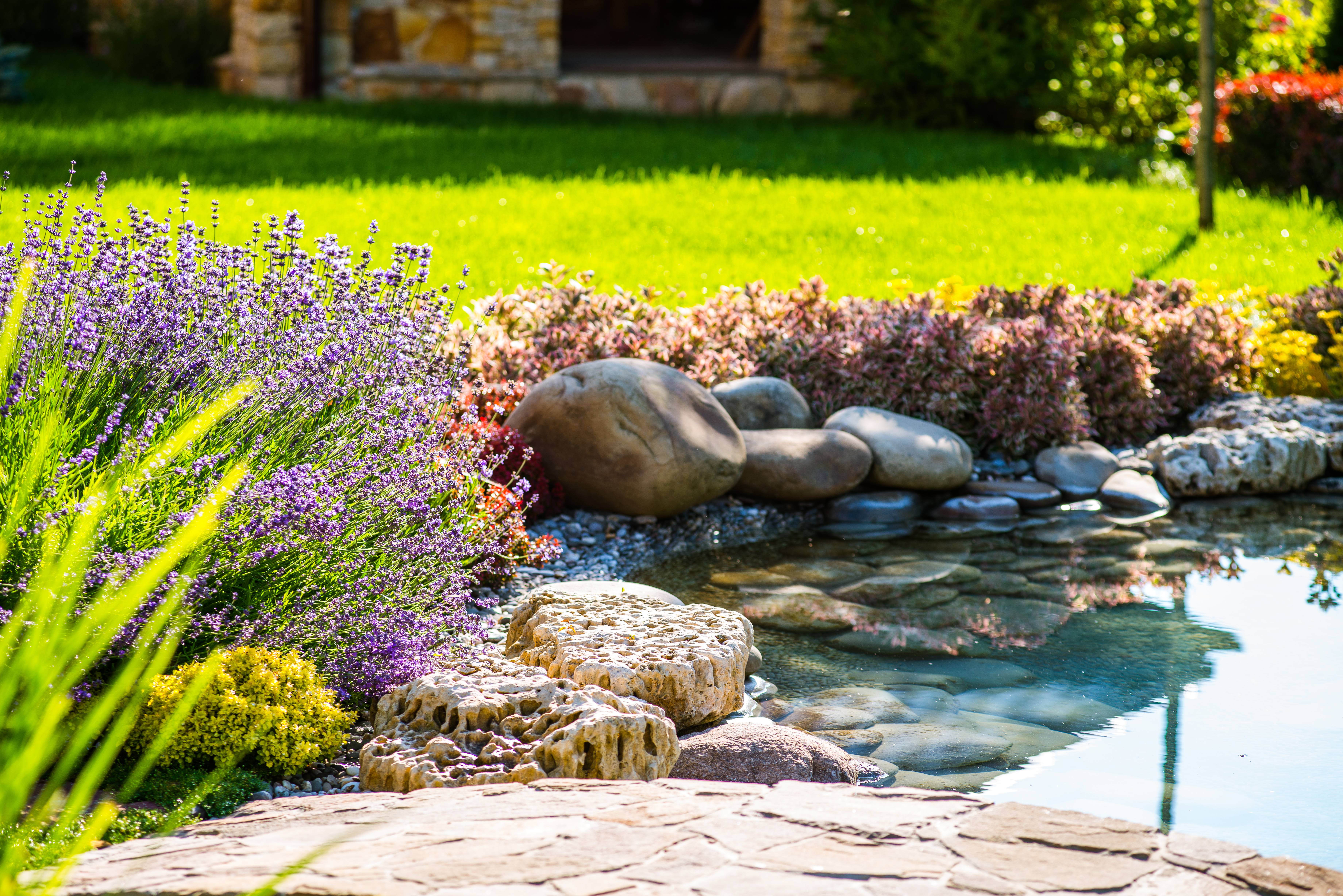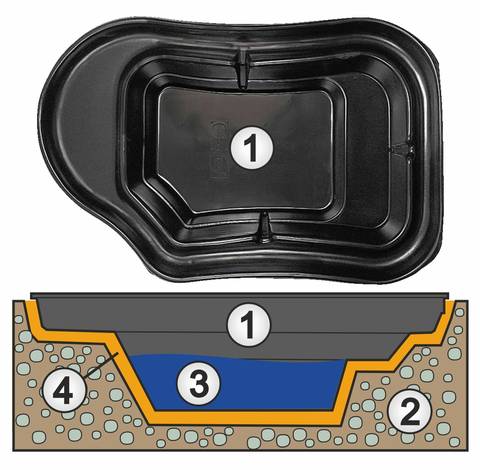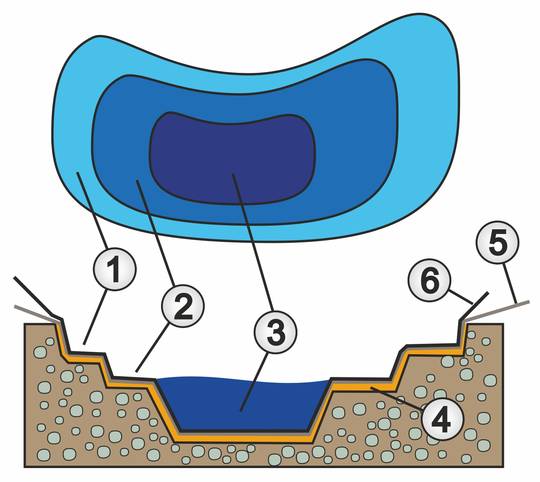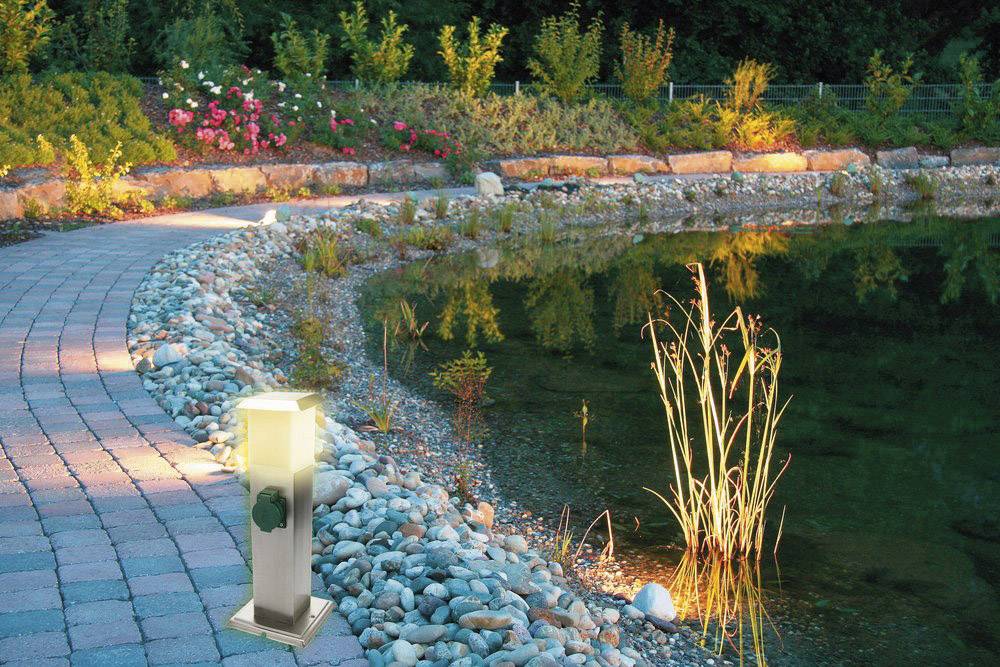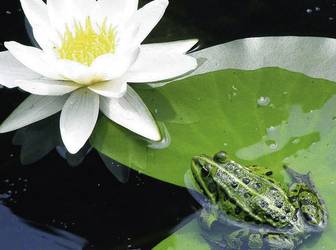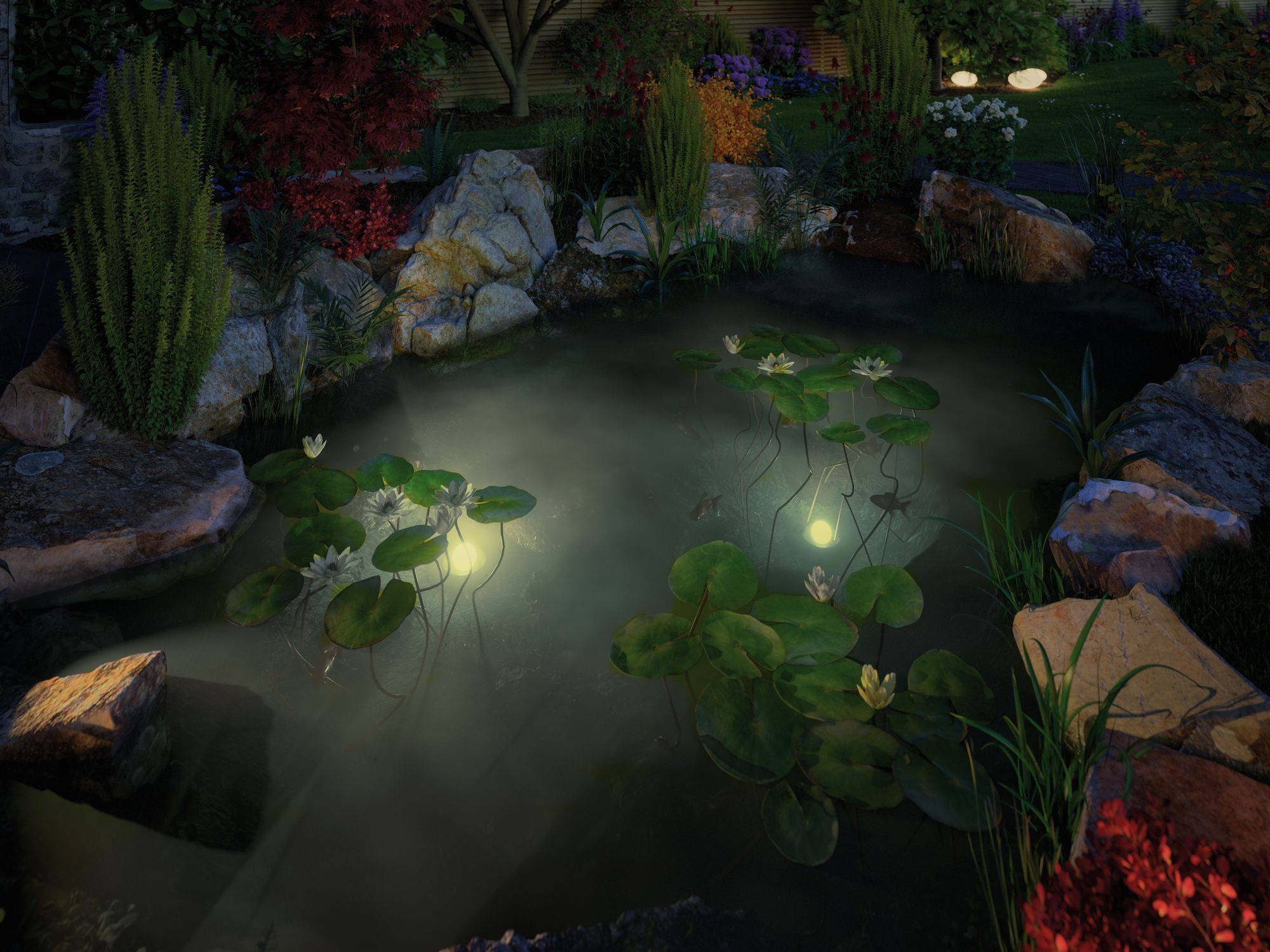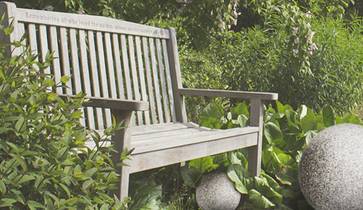Pond construction » Creating a small water oasis for rest and relaxation
Published: 12.08.2021 | Reading time: 8 minutes
This text is machine translated.
A pond in your own garden or in front of company buildings is an absolute eye-catcher at first glance. Because everyone knows that life pulsates in and around a garden pond with different water depths.
In addition to the fish, which can be specifically selected and introduced, amphibians and insects settle in the pond over time. This happens very quickly, as in many areas garden ponds, company ponds and swimming ponds are replacing natural biotopes, which are becoming increasingly scarce.
But ponds are also welcome habitats for a wide variety of plants. And not every plant that thrives wonderfully at the edge of the bank was actually planted there by the pond owner. Rather, birds have taken over the seed transport when resting by the water.
To turn your garden pond into a small water oasis with a feel-good factor, you should consider a few important things when planning. Our guide will tell you what's important.
When choosing a location, the amount of sunlight is of crucial importance. This is because if the sun shines on the garden pond from morning to evening, uncontrolled algae growth is stimulated.
The ideal location is therefore in a semi-shaded area where there is an average of around 5 to 6 hours of direct sunlight per day. The ground must also be free of obstructions such as power cables, shafts or pipes. These could otherwise cause problems when digging the pond pit.
The ground should also not be interspersed with strong roots. Especially when using pond liners, the pressure of the roots can damage the liner and lead to leaks.
Even if the idea seems tempting at first, creating a pond in a semi-shaded area under trees has serious disadvantages. Large trees and bushes lose considerable amounts of leaves and needles throughout the year, especially in the fall. These materials then inevitably end up on the surface of the water. If they are not removed regularly, they sink to the bottom of the garden pond and pollute the water quality as they rot.
Depending on how large the garden pond is to be, there are different options for its construction:
Pond shell
So-called pond bowls (1) are ideal for small garden ponds. These ready-made mini ponds are available in various sizes and with different depth zones. The trays are made of cold-resistant plastic and allow you to create the pond quickly and easily.
All you need to do is dig a pit of the appropriate shape and depth. The pit (2) should be approx. 10 cm wider and deeper than the pond tray. A 10 cm layer of construction sand is then applied to the bottom of the pit and compacted.
The pond shell is then placed on top of this layer. The top edge must be level. The shell can then be filled to 25 - 30% with water (3).
In the next step, the spaces between the sides are also filled with sand (4) and this is then washed in with plenty of water. Finally, the pond shell is completely filled with water and the plants are planted.
Due to the small pond volume and insufficient pond depth, pond shells are only suitable for keeping fish to a very limited extent. In addition, the ecological balance in pond shells is not as stable as in a large foil pond for koi and other fish.
Foil pond
Pond liners are ideal for larger garden ponds or for designing an individual pond shape. In this case, however, precise planning of the size and dimensions is essential. It is best to draw the pond with its water zones of different depths on a true-to-scale ground plan of the site. For very large ponds, it must be clarified whether a permit from the local authorities is required for the construction. The following formula is then used to determine the size of the pond liner required:
Length: Maximum pond length + 2 x maximum pond depth + 2 x overhang of 70 cm
Width: Maximum pond width + 2 x maximum pond depth + 2 x overhang of 70 cm
When creating the pit, the sump zone (1) with a water depth of 10 - 20 cm is excavated first. Then the shallow water zone (2) with a water depth of 40 - 50 cm and finally the deep water zone (3) with a water depth of 80 - 150 cm are excavated. The individual areas or different zones must be excavated approx. 10 cm deeper than the desired water depth. This is because a 10 cm layer of compacted sand (4) is placed on top of the horizontal surfaces. This layer will later serve as a support surface for the pond fleece (5) and the pond liner (6) on top.
Make sure that no sharp stones or roots protrude from the sides of the pond pit. This could damage the pond liner sooner or later.
Line the pond pit with a protective fleece and then with the pond liner. However, do not pull the liner too tight and leave an equal overhang on all sides to seal the edges.
The bottom of the pond can now be covered and filled with some substrate or pond soil and pond gravel. The gradual filling of the pond ensures that the pond liner fits perfectly to the contour of the pond pit.
When cutting the excess liner to size, make sure that an edge of at least 50 cm remains. It is better to cut off too little of the liner than too much. The edge of the pond liner is then fixed in place with stones or buried in the edge area. You can then create the bank zone to give the impression of a natural pond.
Practical tip: Pond inoculation
After filling the pond, the water may be cloudy for a few days. This is quite normal. This is because the microorganisms that naturally purify the water in a garden pond are not yet present. To speed up the process, a bucket of pond water or some pond sludge from a biologically balanced pond can be transferred to the new garden pond. Alternatively, freeze-dried pond bacteria can also be used.
Harmonious transition to the garden
Whether it's a small pond bowl or a large liner pond, a garden pond should always blend seamlessly into its surroundings.
To achieve this, it is essential that the transition from the pond to the surrounding area is harmonious.
A protruding edge of the pond shell or the pond liner tends to be disruptive.
It is better to design the edge of the new pond in a similar way to a natural body of water with natural stones, coarse gravel, stone liners and suitable plants.
The right planting
When planting the pond, make sure that vegetation zones remain separate. Highly proliferating plants must not grow into the garden pond from the outside and aquatic plants should not grow outwards. Use special pond soil that is very low in nutrients for the aquatic plants. Humus from the excavation or commercially available potting soil are unsuitable as the nutrient content is far too high.
If you place the aquatic plants in the plant baskets provided, you can easily remove the plants, roots and pond soil from the garden pond at any time. Also note the different planting depths of the aquatic plants. If necessary, place the plant baskets on stones sunk in the water.
Water features and streams
Water features with fountains are not only aesthetic and relaxing. They also enrich the water with oxygen.
If the pumps are powered by a solar panel, installation is quick and there are no ongoing operating costs.
In conjunction with a stream, efficient and easy-to-clean filter systems can also be integrated into the system to ensure clear water in the garden pond. This is particularly important if fish are kept in the pond.
Pond lighting
With the right pond lighting, your garden pond becomes an absolute eye-catcher in the garden or in front of the company building, even at dusk and in the dark.
However, not every attractive-looking luminaire is suitable for pond lighting.
Depending on where they are installed, the lights must be protected against splashing water or permanent submersion.
The IP protection class indicates whether the lighting can be mounted on or under water.
Create seating
In order to be able to observe and enjoy the life and activity around and in the garden pond in peace and quiet, comfortable seating should be provided at some distance.
This is particularly important if the garden pond is located on company premises and employees want to relax a little during their lunch break.
When is the best time of year to create your own garden pond?
The best time of year to create your garden pond is spring or early summer. This gives the plants enough time to grow and develop. Garden ponds that were created in the fall should not be planted until the following spring.
Can a newly created garden pond be stocked with fish straight away?
No, fish should only be stocked after a few months when the garden pond is biologically balanced or a biological equilibrium has been established.
How deep does a pond shell need to be for fish?
The pond tray must be at least 80 cm deep at its deepest point. In addition, the pond shell should have two or preferably three different pond zones. The different depth zones are equally important for plants and animals.
What is an ice freezer needed for?
The decomposition of organic material also produces harmful foul gases in winter. To allow these to escape at the water surface, the ice cover must not be completely closed. Otherwise there is a risk that the pond inhabitants will be harmed by the foul gases. With an ice-free holder from the pond construction accessories range, the oxygen content in the water is stabilized and gas exchange can take place.
Can a pond be created in any garden?
If you own the land, you can create a garden pond in your garden at any time. Otherwise, you must
